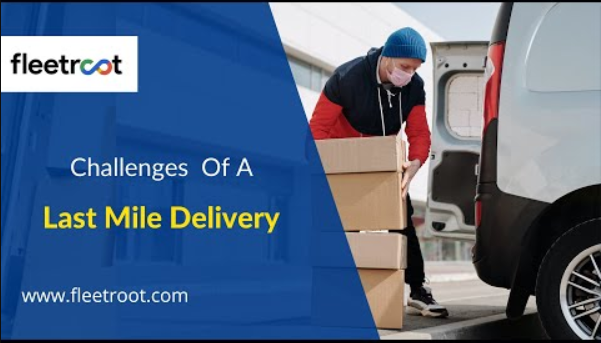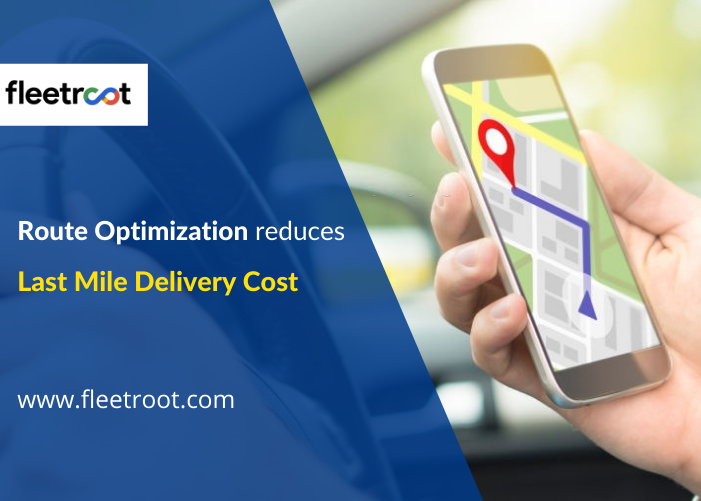Summary
As the term states, “Last Mile Delivery” is, literally, the last leg of the supply chain across which a parcel travels before being delivered to its final customer.
Given that it often forms almost 50% of the cost of a supply chain, in addition to being the most complex and challenging part as well, a Logistics and Supply firm must understand the numerous challenges of Last-Mile Delivery operations.
The use of a fully automated Last Mile Delivery Management Software not only helps in understanding these challenges and factors, but also digitizes (and, brings online) the entire process, thereby enabling Fleet Managers to maintain holistic control over it.
What are the top challenges of a Last-Mile Delivery operation?
1) Changing customer demands: The demands of modern customers with regard to their delivery needs have undergone a complete metamorphosis. The old method of “4-6 business days for delivery”, or “your order is out for delivery” is a thing of the past! Spearheaded by e-commerce giants like Amazon, it is now all about “24-hr delivery” and “Same-day delivery”. Not only that, customers now want to be kept in the loop in real-time about the progress of their parcel (e.g. via in-app notifications or SMS alerts). Additionally, changing customer schedules and delivery windows along with personalization also need to be accounted for by Logistics and Distribution firms.
All this puts immense pressure on supply-chain networks and, especially, on last-mile delivery logistics since that is where all the collective impact of such demands and challenges ultimately collects! Therefore, transport and logistics firms need to reimagine and redesign their last-mile logistics so that they can successfully meet the challenges posed by such ever-increasing customer demands.
2) Last-Mile delivery costs: As mentioned above, the increasing demands of rapidly changing customer demands put immense pressure on supply-chain networks. And, even though customers are willing to pay the additional charges for such expedited shipping options, it still remains a massive logistical task to consistently maintain such an exacting delivery network.
Last-Mile Delivery costs typically account for as much as 40-50% of a firm’s overall delivery cost. And, while this is passed on to the end customer, the challenge of execution remains, especially given the number of dynamic variables that are constantly affecting supply-chain networks and, particularly, last-mile logistics. Also, in cases where the costs cannot be transferred to the end-customer e.g. failed or late deliveries, rejected deliveries (etc.), the costs have to be borne by the transport company itself.
Here’s where the use of modern technology like fleet management software optimizes a delivery operation for efficiencies via proper planning and resource utilization.

3. Real-time visibility: In years past, Feet Managers were limited in the control or “visibility” they had of the delivery process once the parcels/ vehicles were out to delivery. They were dependent on drivers calling in from pit-stops or on daily activity logs that were maintained. This resulted in inefficiencies like gaps in communication, the ability to solve problems/emergencies on the fly, maintain high levels of route optimization, malpractices (etc.). And, with ever-increasing competition and today’s complex global chains, such inefficiencies would land up becoming large problems quite easily.
Additionally, today’s customers also want to be kept updated about their parcel movement across the delivery process, especially that of the last mile. Where their driver is, how much longer it will take, the final ETA – they want to know everything!
While the advent of this feature can be attributed to the likes of Uber, customers of all sorts now expect this exact same service for all their deliveries! No pressure!
These sorts of “real-time demands” exert immense pressure on the supply-chain network, and while it is one thing when all goes according to plan, it results in a whole new level of stress and trouble when the actual timelines differ from projected ones.
4) Route Optimization: As mentioned already, there are several factors that are constantly exerting pressure on Logistics and Distribution firms in managing their daily deliveries. Under such a scenario, using sophisticated (automated) Route Optimization techniques is the only solution.
Route Optimization refers to the process by which the most efficient route between two delivery points is arrived at. Remember that the most efficient route isn’t the shortest, cheapest, or fastest but the one that balances out all such variables to arrive at the most cost-effective and efficient path.
Since all the challenges (and, inefficiencies) of a supply-chain network collectively add up and impact last-mile delivery logistics, using a tool like Route Optimization Software is key in managing it. Without this, it would be impossible for Fleet Managers to meet the complex demands of a delivery network in modern times.

5) Changing variables: Perhaps the most challenging aspect of a supply-chain network is the unpredictability of the variables on which it is centered.
- Ever-changing weather and traffic patterns
- Driver availability and performance
- Vehicle availability
- Resource availability (on-site teams, warehouse teams)
- Infrastructure (warehouse, road repair/construction)
All the above variables are in a constant state of flux (e.g. a sudden storm, an accident), thereby constantly affecting the (lack of) predictability of last-mile delivery logistics. This affects timelines, costs, and delivery schedules.
Therefore, it is of utmost importance for Fleet Managers to maintain real-time communication not only with their internal teams but also with their customers. Again, using GPS-enabled last-mile delivery software that automates the entire delivery process in real-time is a key tool.

6) Use of modern technology: With ever-increasing competition and with consumers becoming more demanding, the use of modern technology like an automated, cloud-based Last-Mile Delivery system is unavoidable. This software balances all the numerous variables and helps Logistics and Distribution firms to stay on top of their delivery operations.
Conclusion: For Logistics and Distribution firms, understanding the challenges of Last-Mile Delivery is critical for managing an entire supply-chain process efficiently. Here is where the use of last mile delivery software is critical-for-success. Without it, it would become impossible for Fleet Managers to monitor and execute the complex processes that constitute a modern and complex delivery operation.




